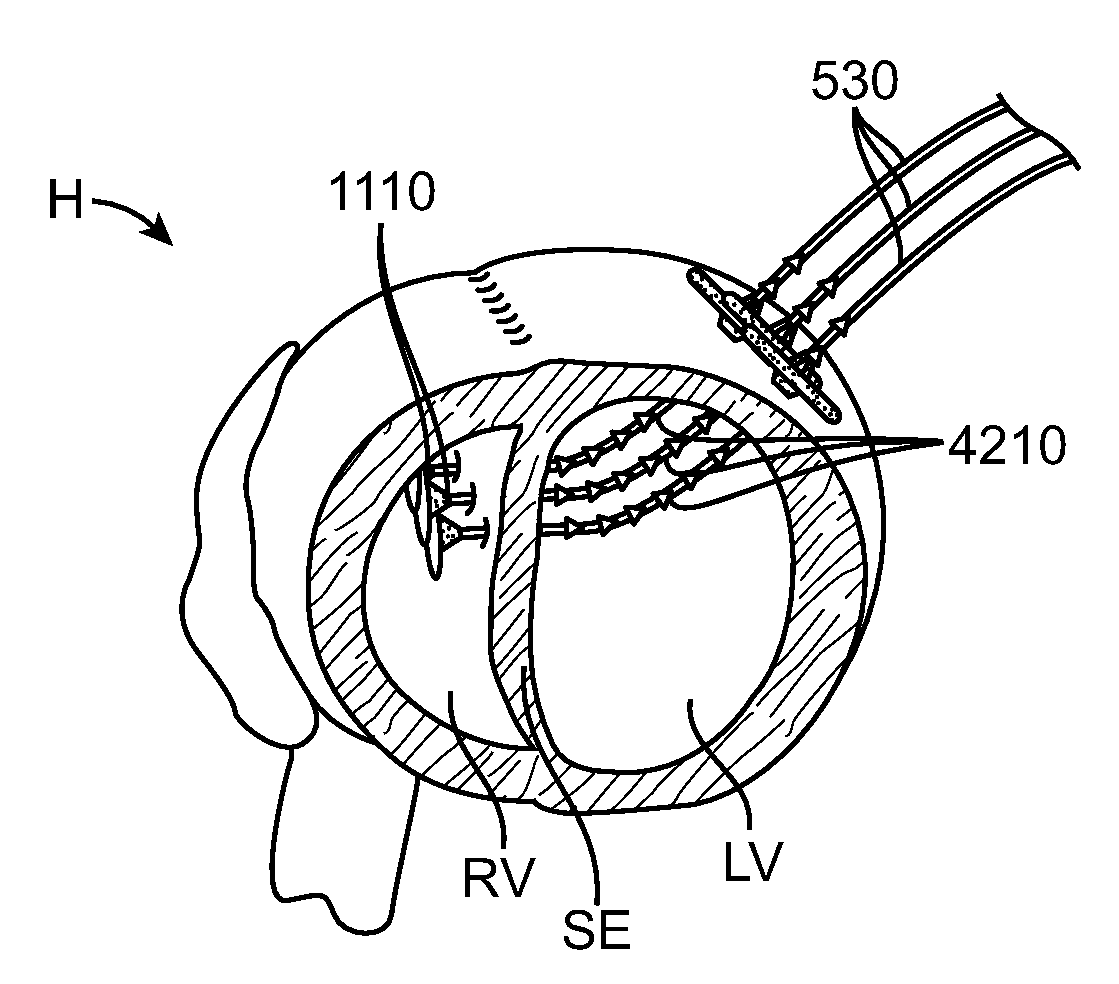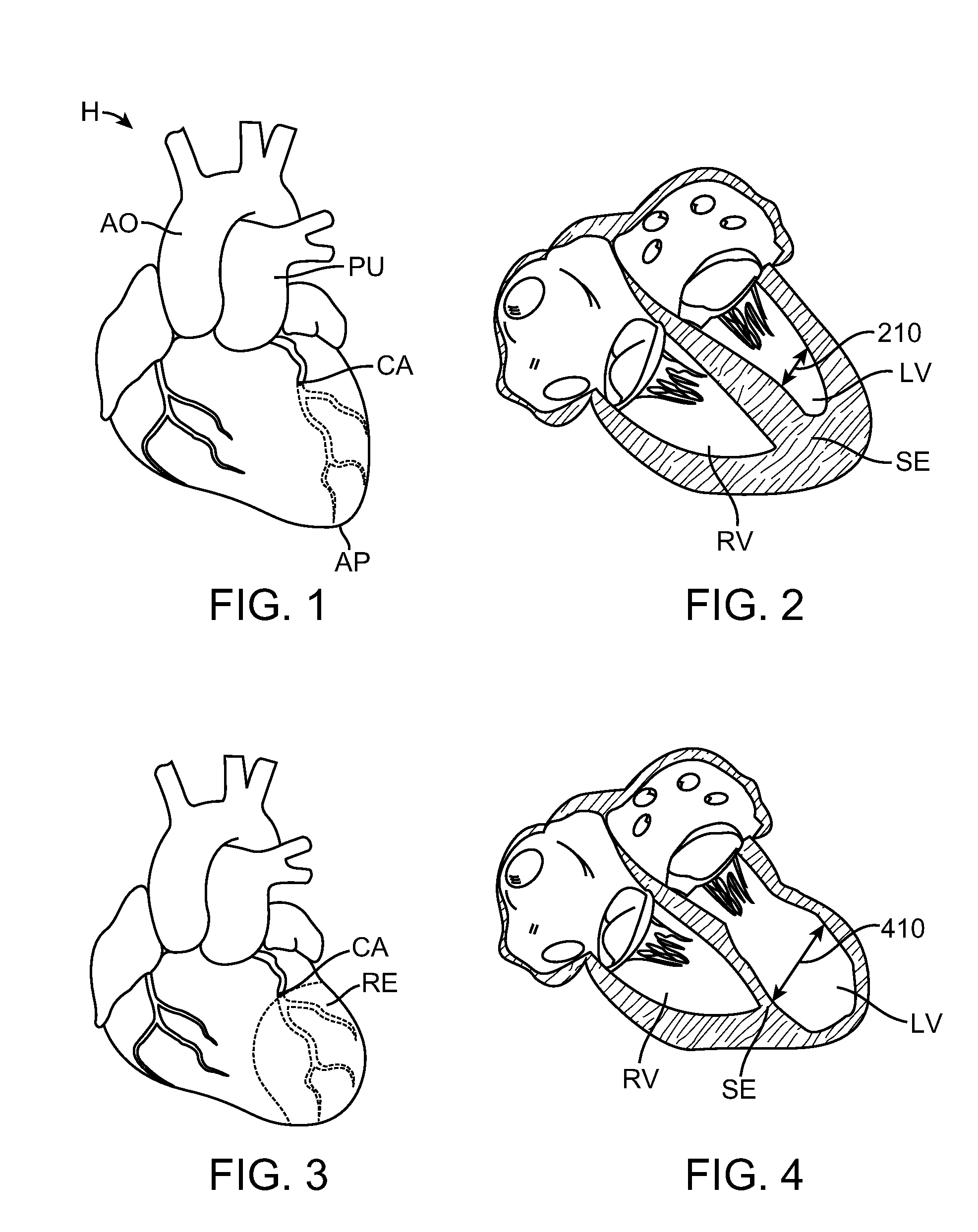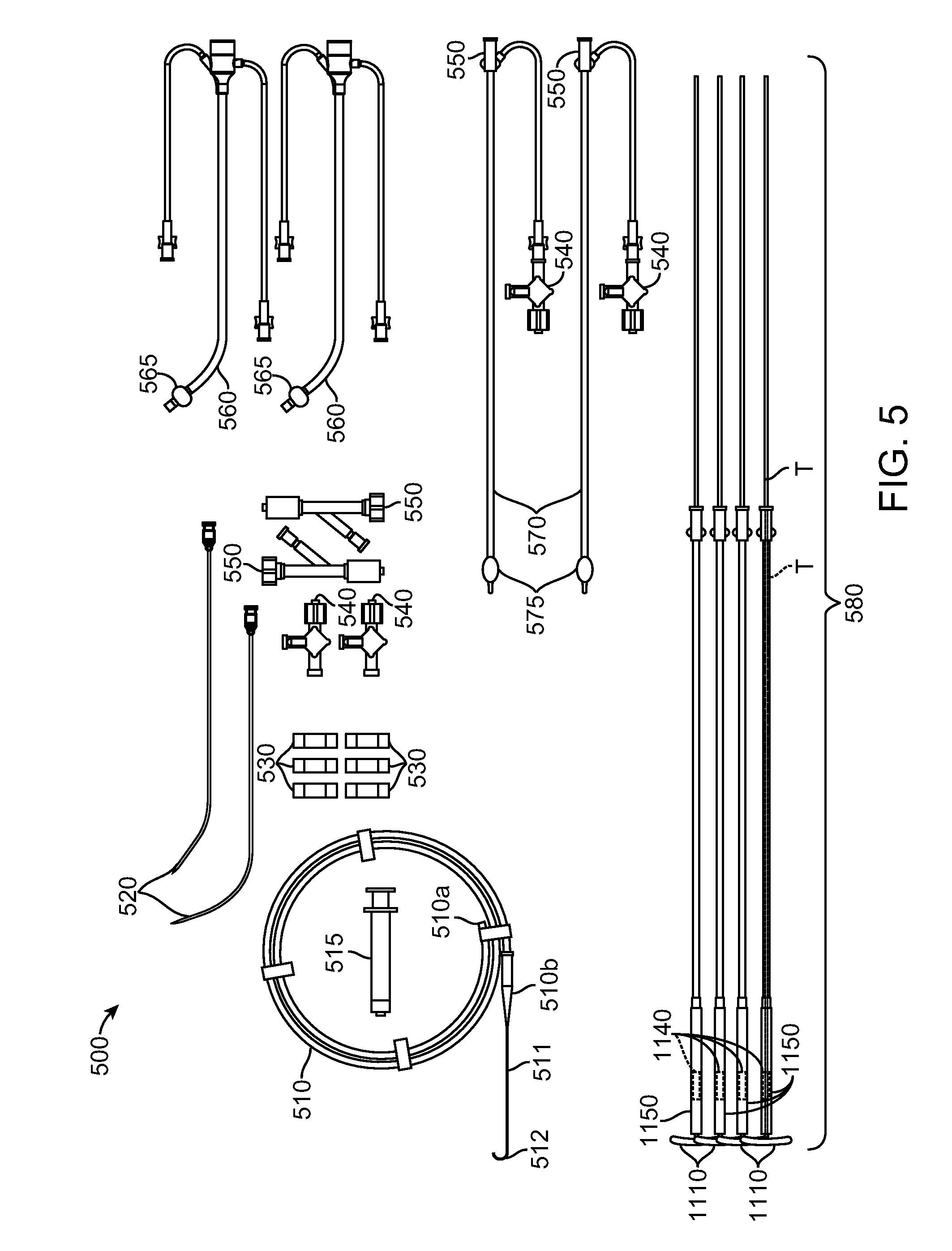Treating Dysfunctional Cardiac Tissue
a cardiac tissue and dysfunctional technology, applied in the field of improving medical devices, systems and methods, can solve the problems of affecting the normal affecting and affecting the function of the heart muscle, so as to reduce the distance between two points in tissue, less or minimally invasive, and reduce the overall size of the ventricle
- Summary
- Abstract
- Description
- Claims
- Application Information
AI Technical Summary
Benefits of technology
Problems solved by technology
Method used
Image
Examples
Embodiment Construction
[0069]The present invention generally provides improved devices, systems, and methods for treatment of a heart. Embodiments of the invention may be particularly beneficial for treatment of congestive heart failure and other disease conditions of the heart. The invention may find uses as a prophylactic treatment, and / or may be included as at least a portion of a therapeutic intervention.
[0070]Embodiments of the invention may find use as a device applied to or implant placed in the heart of certain patients with congestive heart failure so as to reduce ventricular volume in a procedure called “Epicardial Catheter-based Ventricular Reconstruction,” or ECVR. The left ventricle of hearts affected with congestive heart failure may dilate or increase in size. This increase in size can result in a significant increase in wall tension and stress. With disease progression, the volume of the left ventricle gradually increases while forward blood flow gradually decreases. Scar tissue will often...
PUM
 Login to View More
Login to View More Abstract
Description
Claims
Application Information
 Login to View More
Login to View More - R&D
- Intellectual Property
- Life Sciences
- Materials
- Tech Scout
- Unparalleled Data Quality
- Higher Quality Content
- 60% Fewer Hallucinations
Browse by: Latest US Patents, China's latest patents, Technical Efficacy Thesaurus, Application Domain, Technology Topic, Popular Technical Reports.
© 2025 PatSnap. All rights reserved.Legal|Privacy policy|Modern Slavery Act Transparency Statement|Sitemap|About US| Contact US: help@patsnap.com



